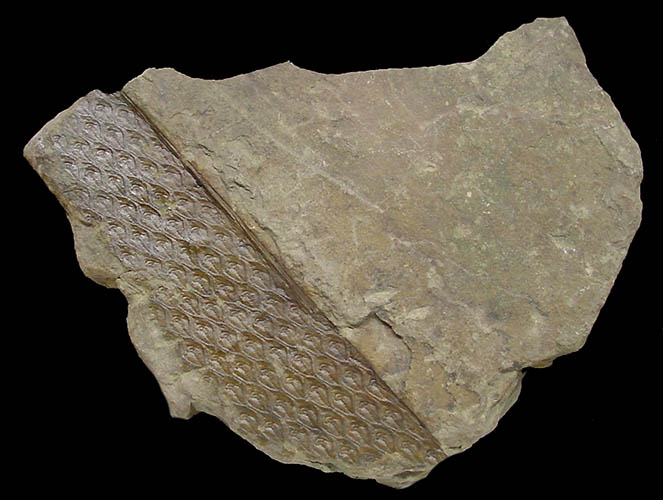 |
 |
 |
 |
 |
Produced
by the Population Genetics and Evolution class, Furman University |
||||
 |
 |
 |
 |
 |
Produced
by the Population Genetics and Evolution class, Furman University |
||||
 |
The
Carboniferous: Lepidodendron |
 |
||
| One of the
most prolific fossilized species of club moss from the Carboniferous period
is Lepidodendron, a lycopod that grew to heights of 54 m (Illinois
State Museum Society 2003) in dense stands in the coal swamps that were
so widespread in Europe and North America during that time (Paleo Direct,
Inc. 2000). They comprised over ninety percent of coal from Pennsylvanian
age coal beds, which include all of the coal in the state of Illinois
(Illinois State Museum Society 2003). The genus’s most outstanding
feature besides its tremendous height is the scaled pattern of leaf cushions
on the trunk, which have been remarkably well preserved and characterized
(Paleo Direct, Inc. 2000). It is known to have had a very tall, thick
(up to six feet diameter) trunk and branches at its top with leaves and
cones, the latter presumably for reproduction (Hieb 2008). In fact, specimens
are so detailed and complete that studies of individual cells have revealed
much of the physiology, both internal and external, of the genus, including
divergences from other species in formation of the cortical meristem (Eggert
and Kanemoto 1977). Known descendents of Lepidodendron are modern club
mosses, quillworts, and spikemosses (Hieb). Page by Will Towler |
 |
| Imprint of Lepidodendron. Photo from: Paleo Direct, Inc. | |
|
Illinois State Museum Society. 2003.DimMazon Creek Fossils: Lepidodendron Tree. Accessed March 3, 2010. Paleo Direct, Inc.2000. Ultra rare giant Lepidodendron imprint on Ruhr sandstone slab. Accessed March 2, 2010. Hieb M.2008. Fossil Plants of the middle Pennsylvanian Period: Lycopods. Plant Fossils of West Virginia. Accessed March 2, 2010 Eggert D, Kanemoto N. 1977. Stem phloem of a modern Pennsylvanian Lepidodendron. Botanical Gazette. 138: 102-111. |